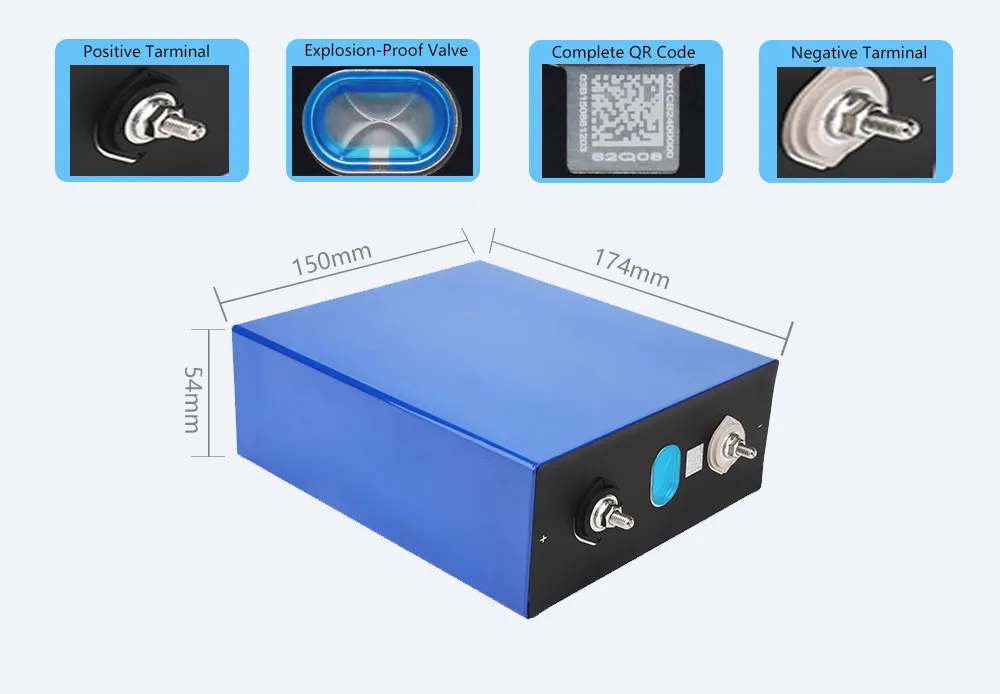Living off the grid can be fun and exciting. The quiet environment and the beautiful scenery are all inviting, but to have the best experience, you must go with a reliable, safe battery to store your generated power.
Battery power solutions are a necessity for off-grid living as they help store energy generated from renewable sources.
While there are several battery options for living off-grid, LiFePO4 is an excellent option that has gained the hearts of RV owners and marine enthusiasts.
However, the common question among off-grid life enthusiasts who find value in LFP is, is LiFePO4 the safest lithium-ion battery for living off-grid?
This blog post unravels everything you need to know about LiFePO4 batteries' safety. You will also learn why you need to choose a CloudEnergy LiFePO4 Deep Cycle Battery 12V 150Ah for your off-grid adventure.
It is crucial that you understand what a LiFePO4 battery is and its areas of application.
LiFePO4 is a common abbreviation for lithium iron phosphate, also commonly shortened to LFP. This is a rechargeable battery under the lithium-ion battery class with a unique chemistry.
While the battery is popular for its long lifespan and efficiency, optimal safety is a major feature that makes it a choice for various applications. Common applications to find LiFePO4 batteries include off-grid energy storage, electric vehicles, portable electronics, and backup power systems.

LiFePO4 has been around as far back as up to three decades. It first appeared in a research work by the University of Texas in 1996 but gained popularity when it began to feature in small gadgets like laptops and cell phones.
However, even when it was introduced to small gadgets, LFP was never deemed fit to power larger storage solutions. This setback was associated with a few challenges, which have now been addressed optimally.
Today, LiFePO4 batteries are safe for various applications as they are less hazardous than other lithium-ion batteries.
LiFePO4 batteries are a variety of lithium-ion batteries, but they stand out with a few outstanding features. Some of the reasons why LiFePO4 batteries make a better choice than their lithium-ion counterparts include:
The first thing you have probably noticed with the LiFePO4 batteries and other lithium-ion batteries is the name difference, and this signifies the different chemical compositions of the two battery types.
While a lithium-ion battery is made up of lithium manganese oxide or lithium cobalt dioxide, a LiFePO4 battery (lithium iron phosphate) has its cathode made up of lithium iron phosphate.
Interestingly, this unique chemical composition makes lithium iron phosphate safer than other lithium-ion batteries.
The new technology found in LiFePO4 batteries gives them better chemical and thermal stability than their counterparts.
With improved chemical and thermal stability, LiFePO4 batteries are less likely to give in to combustion, making them safer for different applications like off-grid living and marine use.
It will interest you to learn that LiFePO4 has a longer lifespan than other lithium-ion battery technologies, which is credited again to the phosphate chemistry of LiFePO4.
However, it is worth noting that both chemistries have a long lifespan; the only difference is that lithium iron phosphate is less affected by overcharging or short-circuiting, hence a longer lifespan.
LiFePO4 batteries are safe to an outstanding degree. It is one of the safest batteries for different applications. However, since no battery is completely safe, LFP doesn't guarantee safety.
The uncommon level of safety of LiFePO4 is credited to the batteries' ability to remain chemically composed when overcharged or over-discharged. Plus, the batteries are structurally stable when subjected to physical damage.
However, it is worth mentioning that LiFePO4 batteries can be hazardous, just like other batteries, and how safe your LiFePO4 battery is depends greatly on your maintenance routine and how you use the battery. Even the most robust battery will malfunction and pose safety risks when not properly maintained and used.
For example, long exposure to fire, electric stress, or mechanical shocks can damage the battery and trigger hazards.
Thermal runaway is a condition where a battery's temperature exceeds the recommended operating temperature range. This is usually caused by over-charging and over-discharging, summed up to internal heating. A battery's temperature change can also be linked to external heating.
Electrical hazards occur when the battery is improperly connected or short-circuited. The best way to avoid electrical hazards with LiFePO4 batteries is to verify the polarity during connection and be careful when working with metallic tools around the battery.
Hazards from LiFePO4 batteries are linked to different abuses, but the major ones include:
Here is a breakdown of how these factors can affect the functionality of your LiFePO4 battery and how to mitigate them:
A LiFePO4 battery can experience mechanical abuse when it is subjected to external forces. When your battery collides with a heavy object, the weak points of the cells making up the battery can break and cause damage.
This is why you have to be careful with how you transport your battery and choose a suitable location for it on your vehicle.
One way users expose their batteries to electrical abuse is during the charging and discharging process. Also, your battery becomes a subject of electrical abuse when it is short-circuited.
Modern battery manufacturers build their batteries with BMS to monitor the batteries' charging and discharging process. Hence, looking for a battery with BMS makes sense when choosing a battery for your off-grid life.
Thermal abuse situations are linked to increased internal or external temperature of a battery. While the battery can experience high temperatures due to internal activities like over